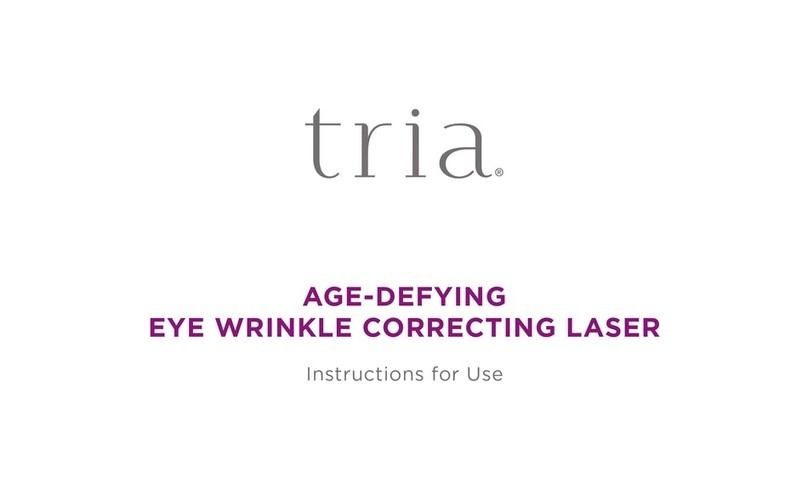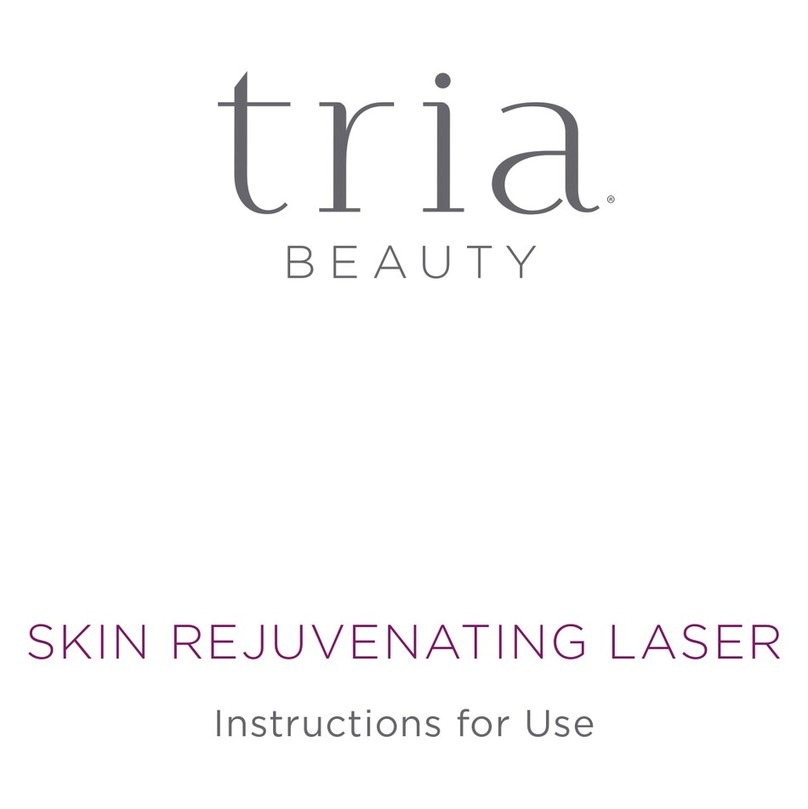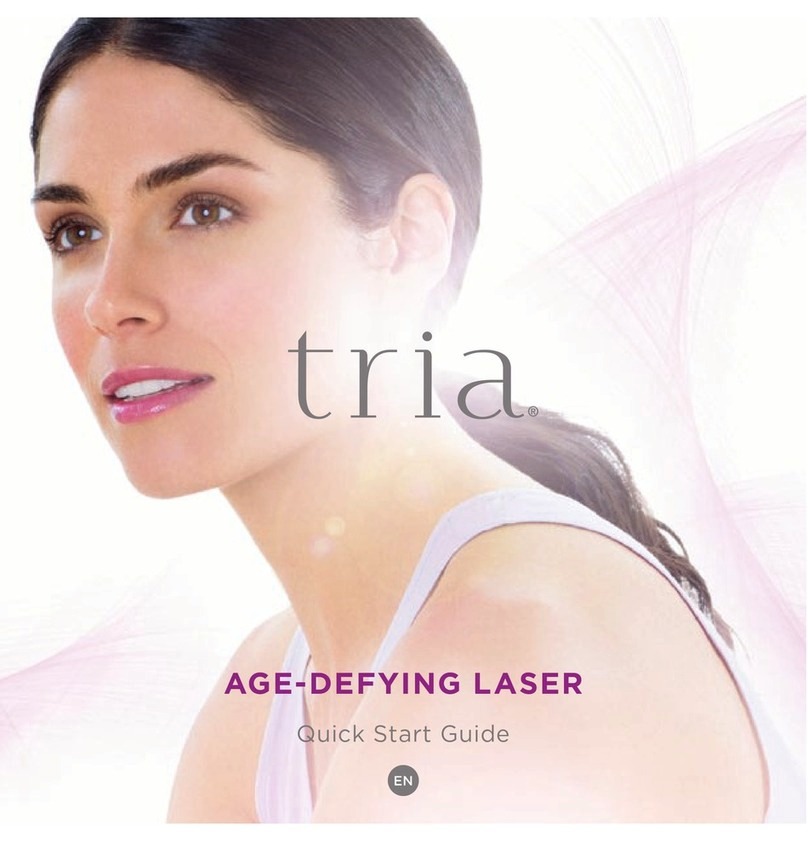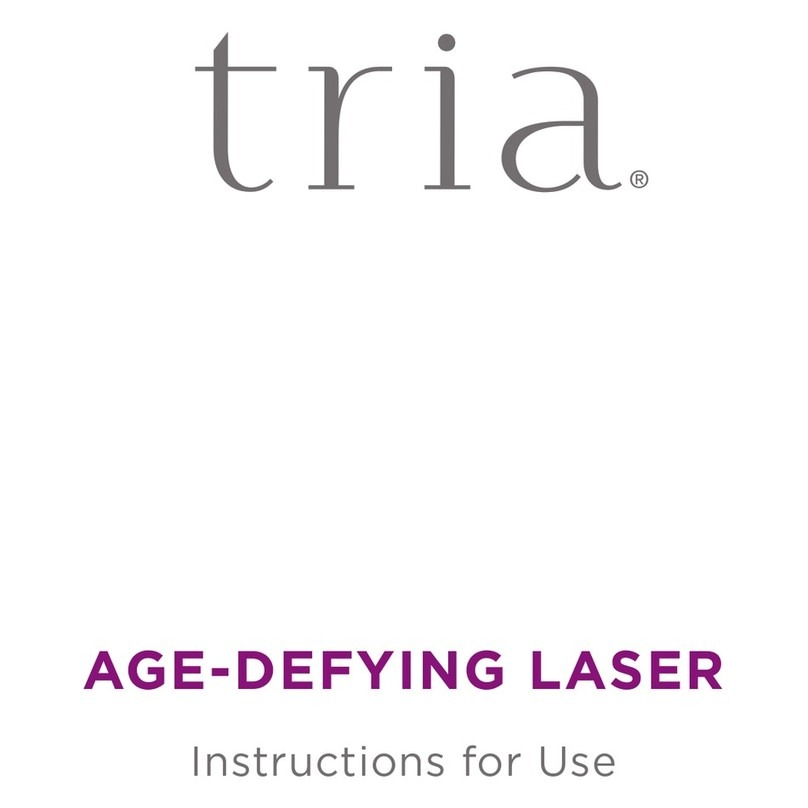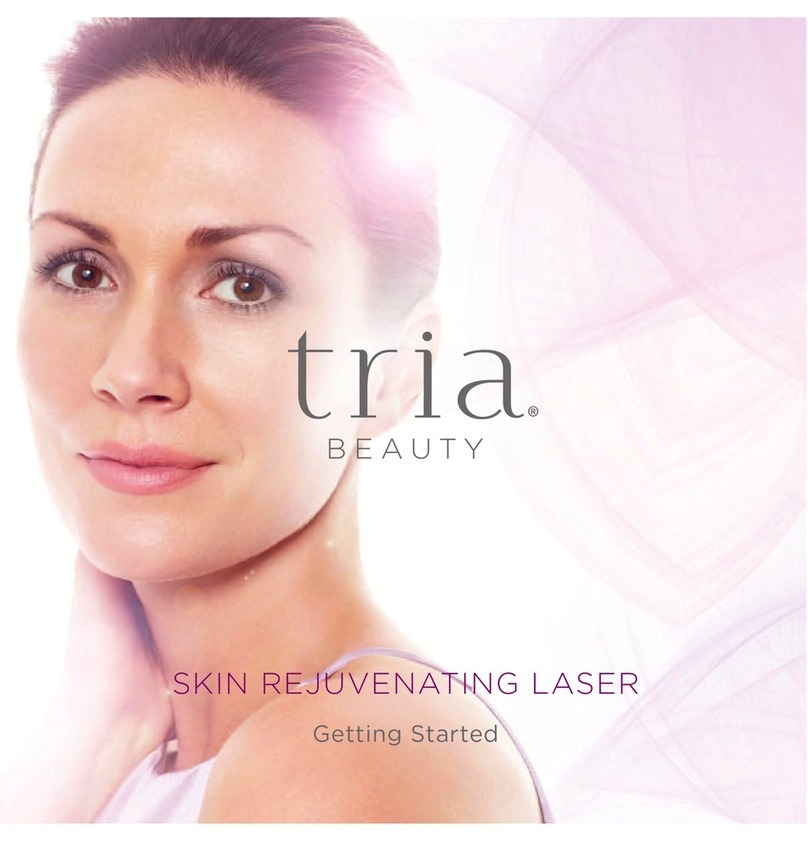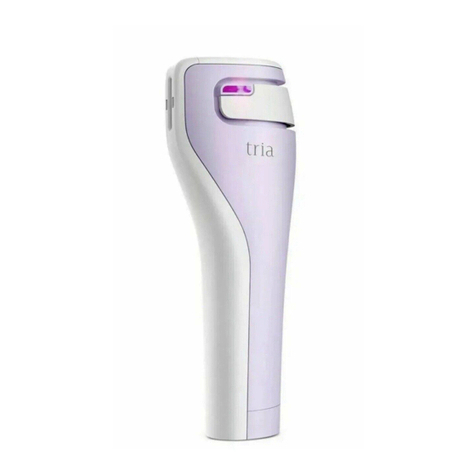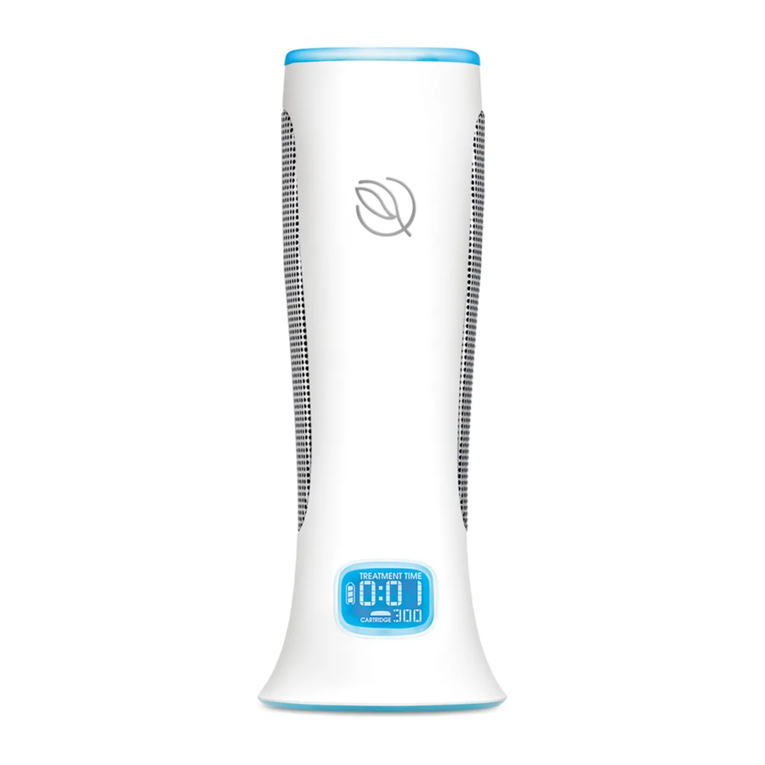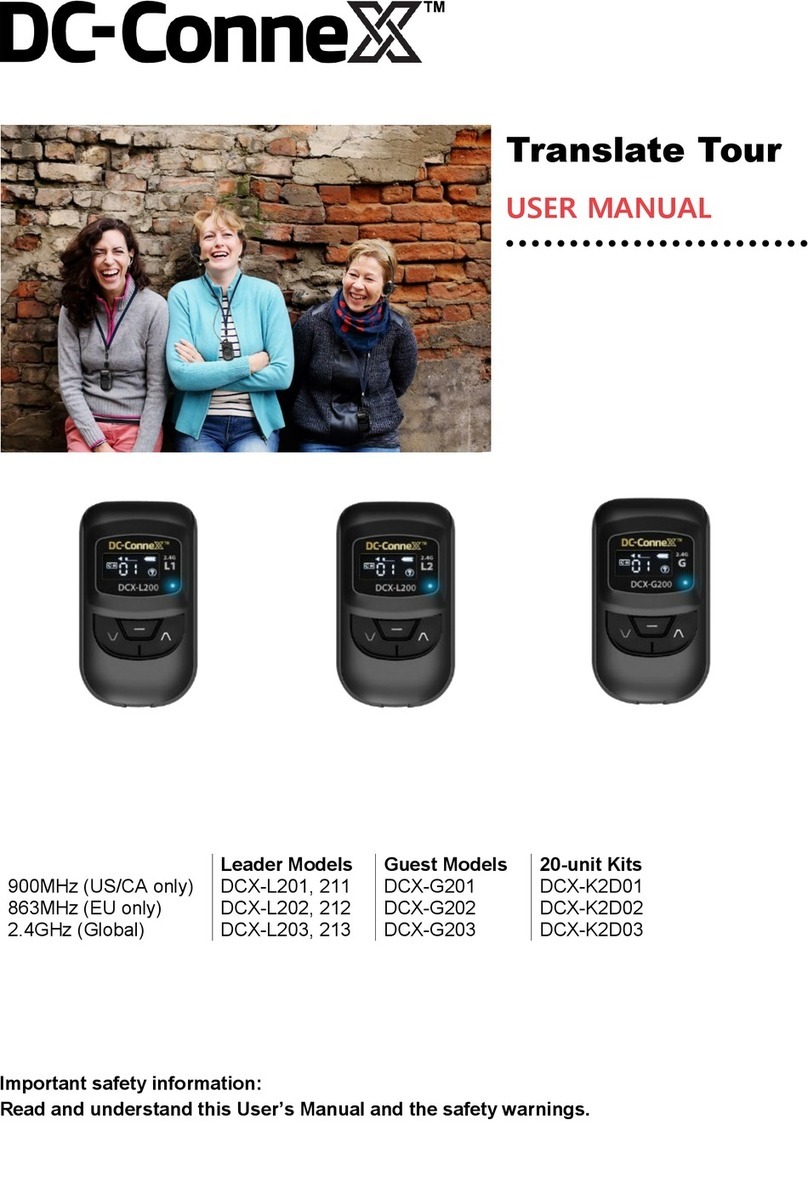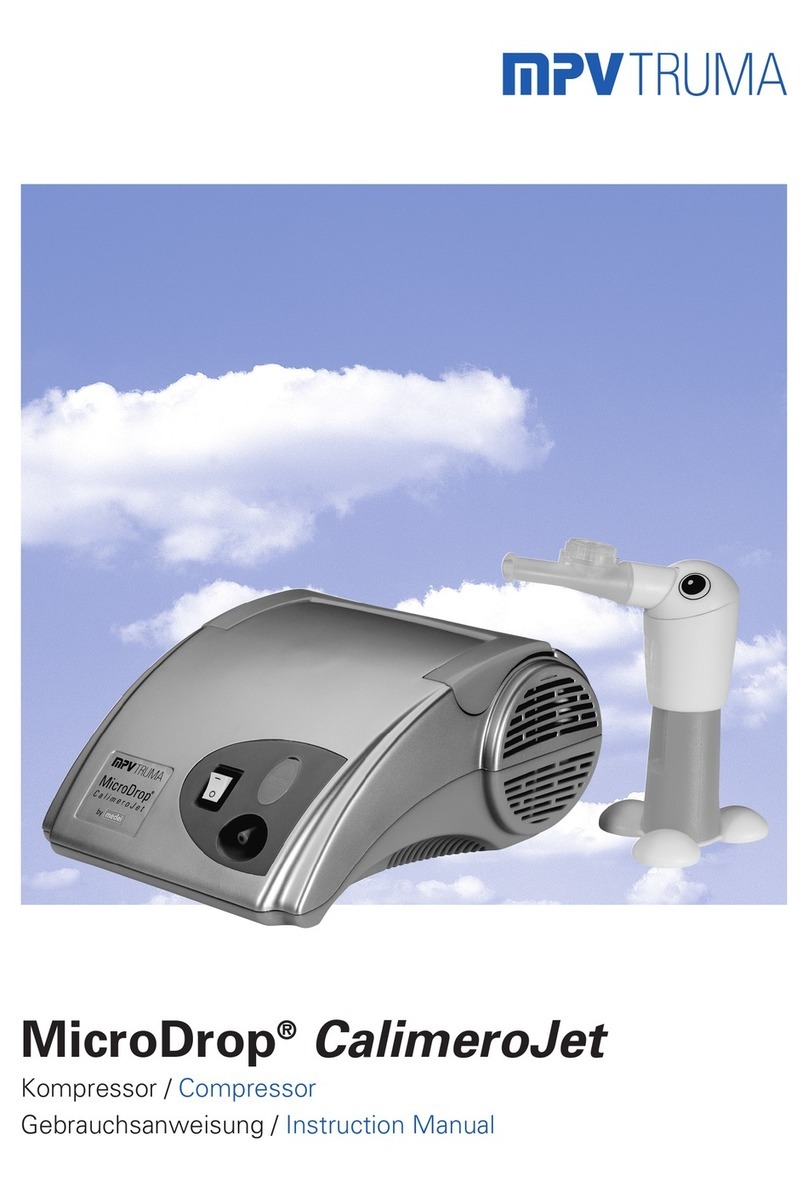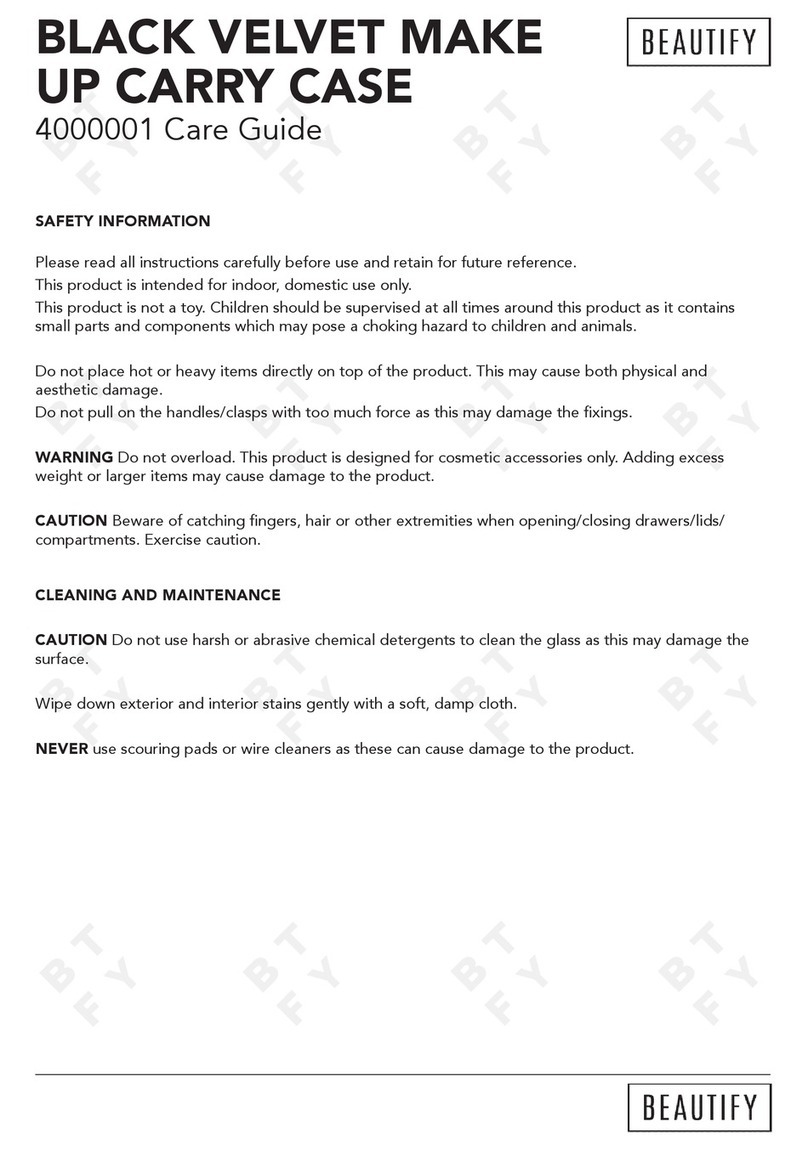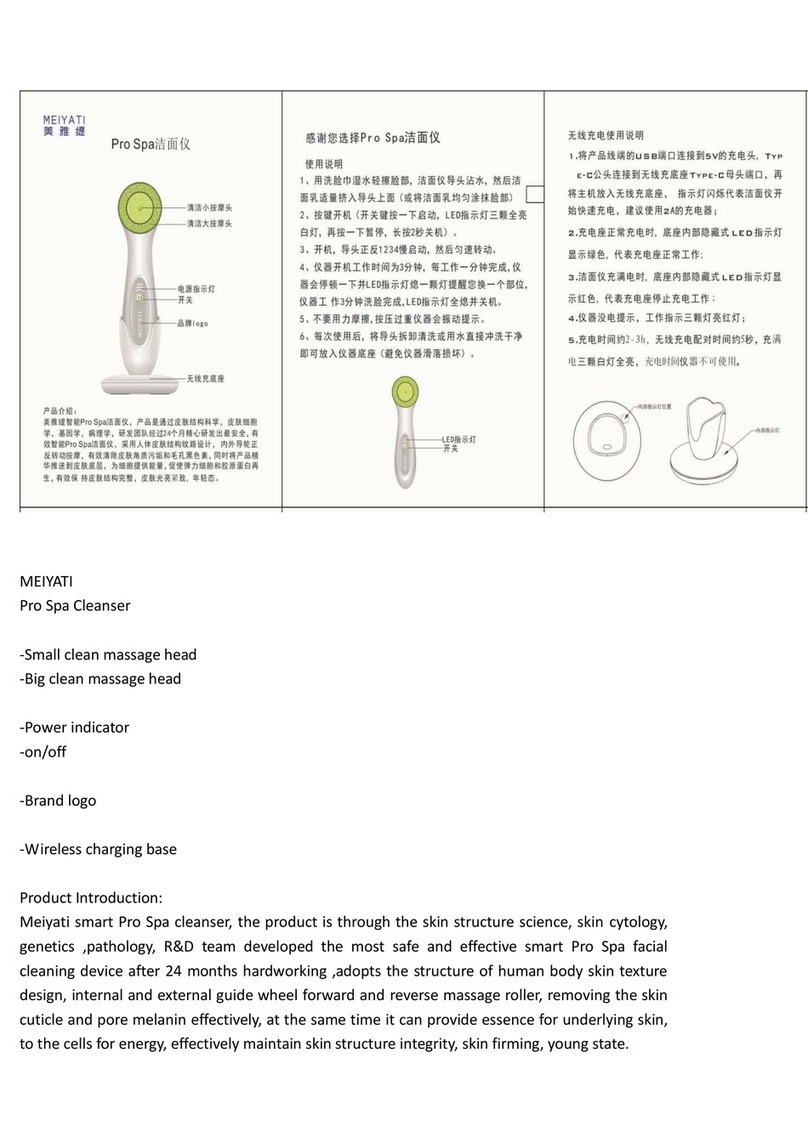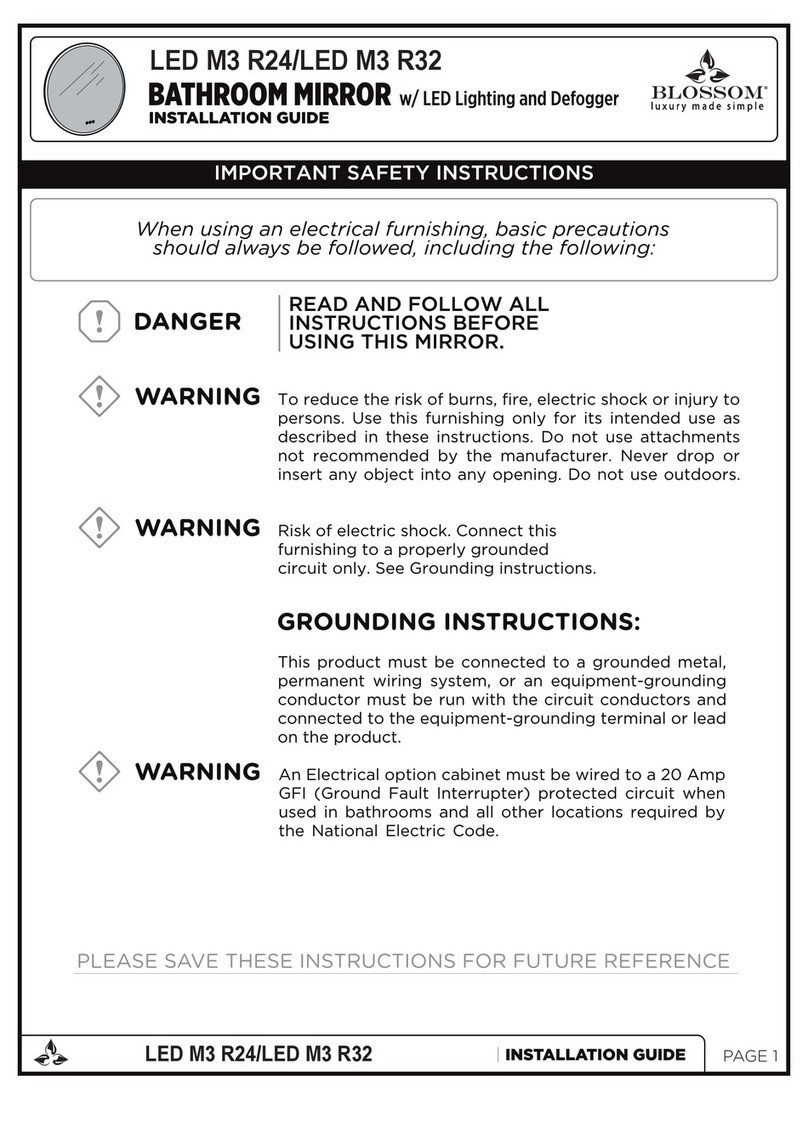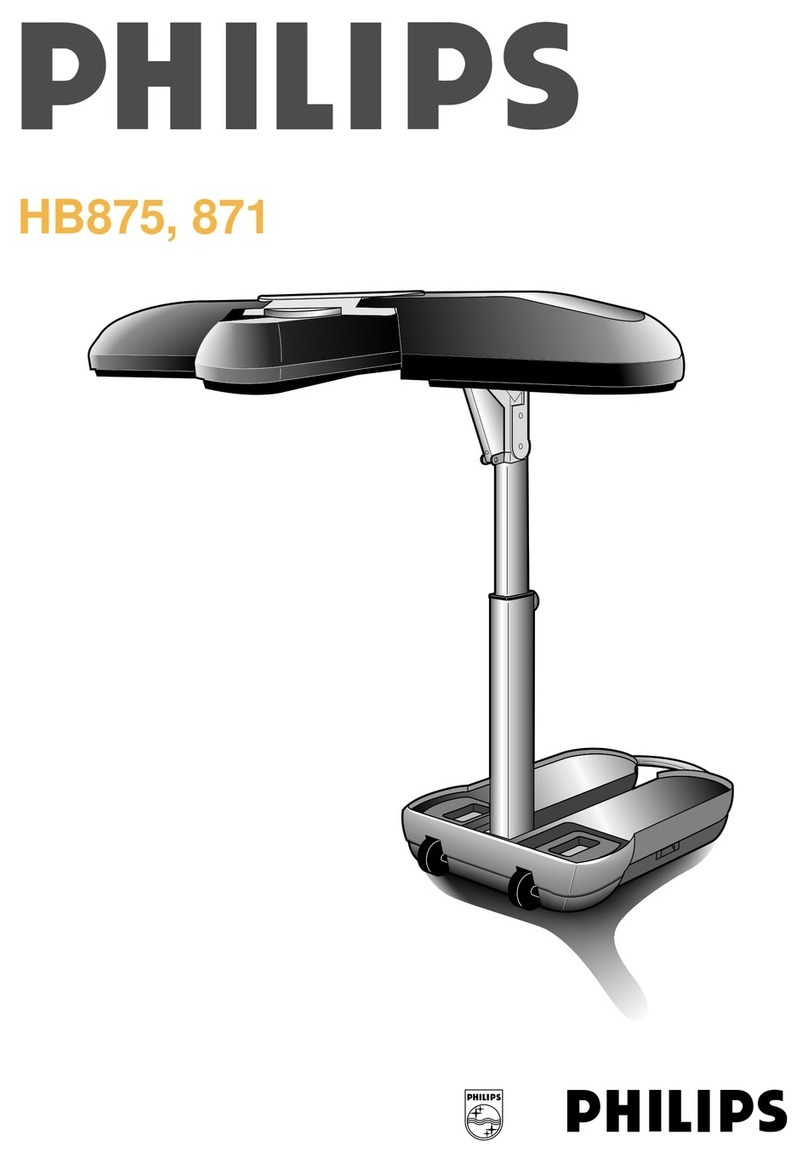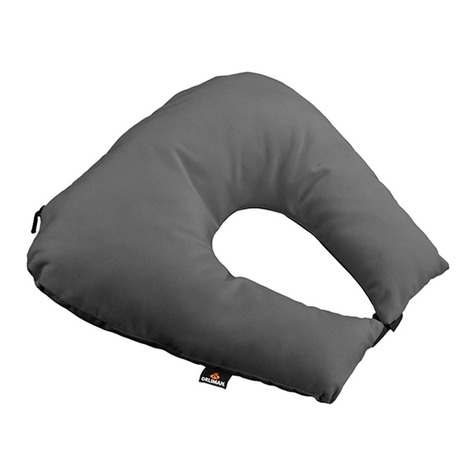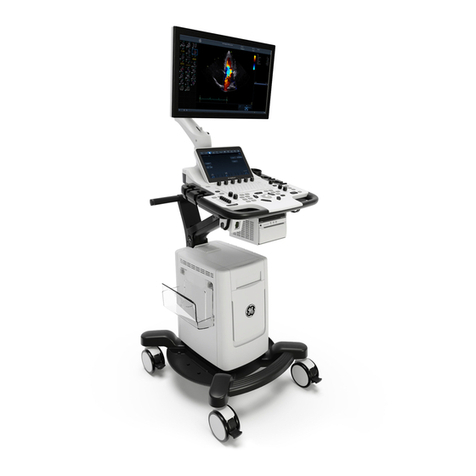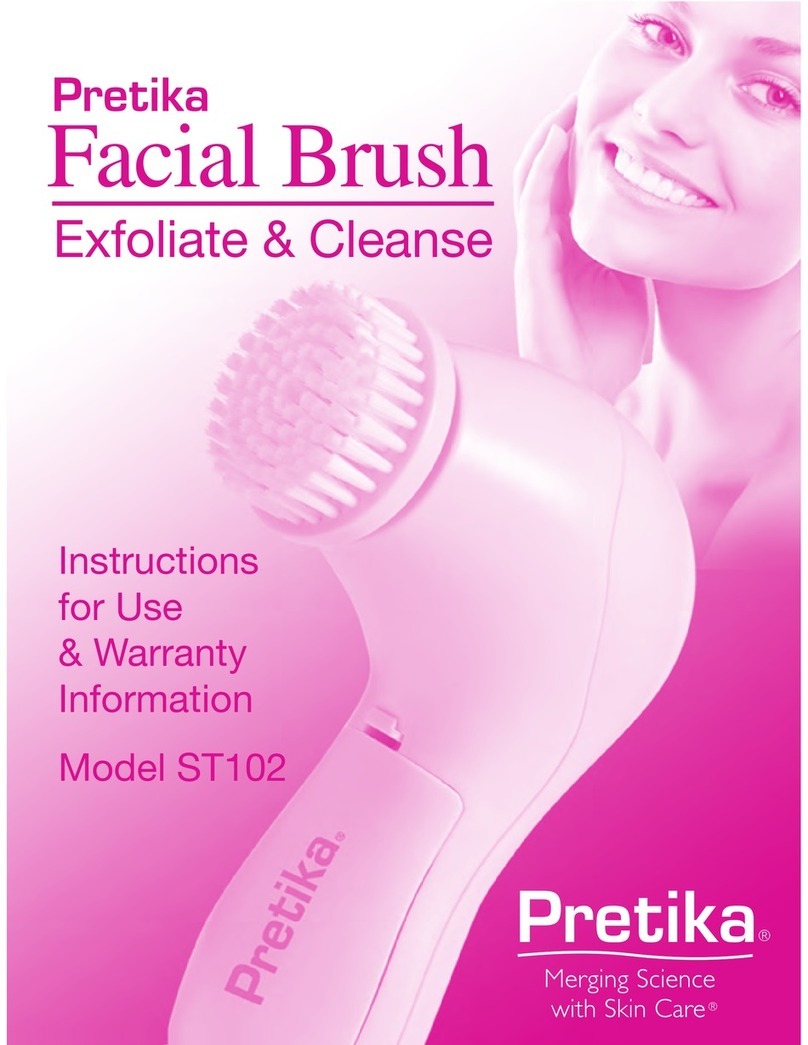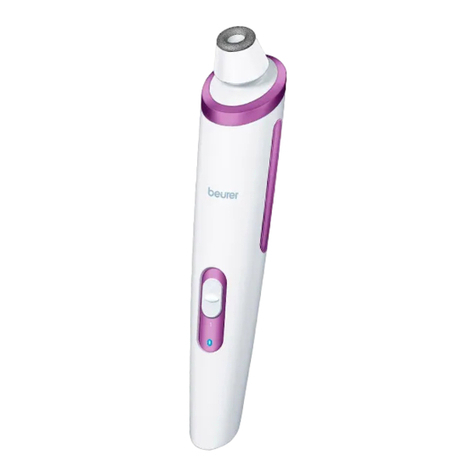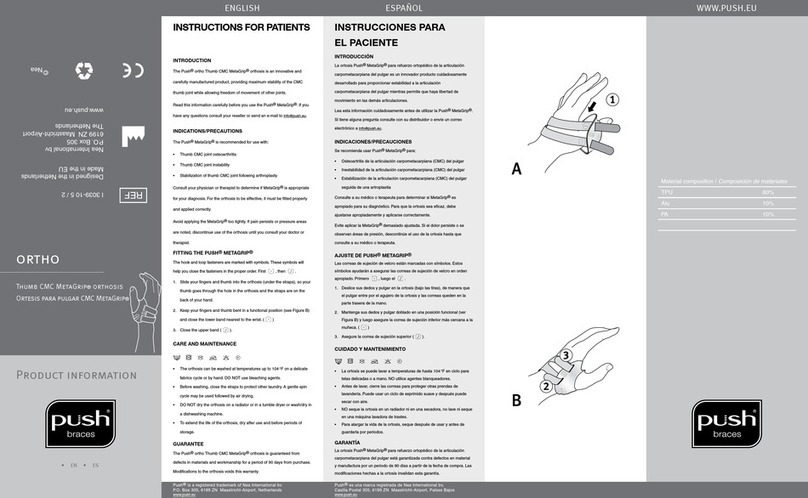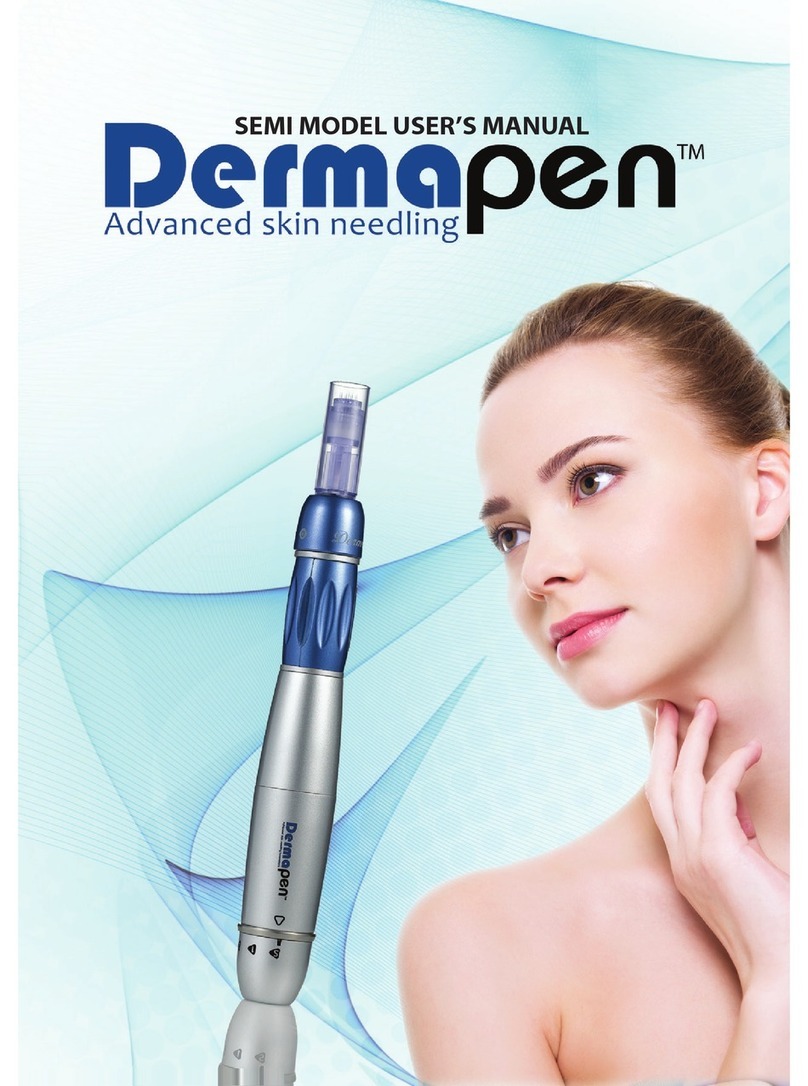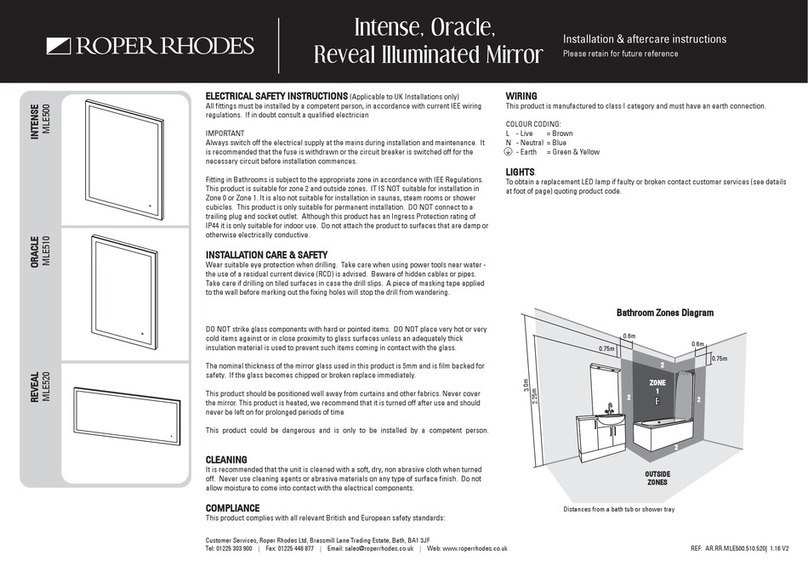13
WARNINGS
TO REDUCE THE RISK OF POTENTIALLY
SERIOUS INJURY:
DO NOT use the Tria Acne Clearing Blue Light on or around
your eyes or eyelids, and do not aim the Tria Acne Clearing Blue
Light at your eyes or stare directly into the light. This could cause
serious eye injury, including blindness or temporary loss of vision.
STOP USING the Tria Acne Clearing Blue Light and see
a health care professional if you feel pain or your skin gets
uncomfortably hot during treatment. Continuing to use Tria
Acne Clearing Blue Light could result in skin injury such as
temporary redness or blisters.
STOP USING the Tria Acne Clearing Blue Light and see a
health care professional if you have skin redness that persists
more than 24 hours after treatment. Failure to follow this warning
may result in skin injury such as blisters or temporary pigment
changes (hypo- and hyperpigmentation).
DO NOT use the Tria Acne Clearing Blue Light to treat
severe nodular or cystic acne. Delaying proper treatment of
severe nodular or cystic acne may be harmful. You should seek
proper treatment without delay. See a healthcare professional.
DO NOT use the Tria Acne Clearing Blue Light to treat moles,
warts, open sores, cancerous lesions or any skin condition other
than acne. Delaying proper treatment of these conditions may
be harmful. You should seek proper treatment without delay.
See a healthcare professional.
DO NOT treat the face more than twice a day (twice every
24 hours). Doing this could result in increased risk of skin injury
such as temporary redness, blisters or pigment changes
(hypo- and hyperpigmentation).
DO NOT let anyone under 13 use the Tria Acne Clearing
Blue Light. The Tria Acne Clearing Blue Light has not been tested
on children under 13 and may cause skin injury such as temporary
redness or pigment changes (hypo- and hyperpigmentation) and
may cause serious eye injury.
DO NOT share the Tria Acne Clearing Blue Light with other
people. Sharing the device could transfer bacteria from one
person to another and may cause harmful infection.
DO NOT use the Tria Acne Clearing Blue Light if the device
is visibly damaged, and never attempt to open or repair the
device. Doing this could result in a serious eye or skin injury
or possibly fatal electric shock.
DO NOT use the Tria Acne Clearing Blue Light if the device
is wet or if the device or power cord could fall into water while
it’s plugged in. Doing this could result in possibly fatal electric
shock. These actions increase the risk of skin or eye injury.
Please contact Customer Service for assistance.
RISKS
The risks and benefits of the Tria Acne Clearing Blue
Light treatments have been tested in a clinical study of
32 individuals with acne. If you use the Tria Acne Clearing
Blue Light as directed, the risks are very low. In the clinical
studies, none of the individuals treated (0 out of 32)
experienced any serious side eects. However, the following
mild side eects may occur with normal use:
SKIN WARMTH: The skin may feel warm during treatment.
TEMPORARY SKIN REDNESS: The skin may develop
a slight redness that fades within 24 hours.
TEMPORARY SKIN DISCOLOURATION: The skin may
develop a slight discolouration that lasts more than 24 hours.
If this occurs, stop using the Tria Acne Clearing Blue Light.
TEMPORARY SKIN DRYNESS: The skin may develop
slight dryness that goes away during the first 1-2 weeks
of treatment.
If the Tria Acne Clearing Blue Light is used improperly
or it malfunctions, there are other risks. The following chart
lists some of these risks.
ADVERSE EVENT LIKELIHOOD OF
ADVERSE EVENT ADVERSE EFFECT LIKELIHOOD OF
ADVERSE EFFECT
General overuse of the device,
such as performing many
treatments per day
Unlikely Skin injury, such as redness, blisters or
pigment changes
Minor skin injury is
unlikely; major skin
injury is very unlikely.
Use of device on severe acne Unlikely User delays known eective treatments Likely
Use of device on non-acne
skin conditions
Unlikely User delays known eective treatments Likely
Caution – performance of the procedures other than those specified herein
may result in hazardous radiation exposure.
